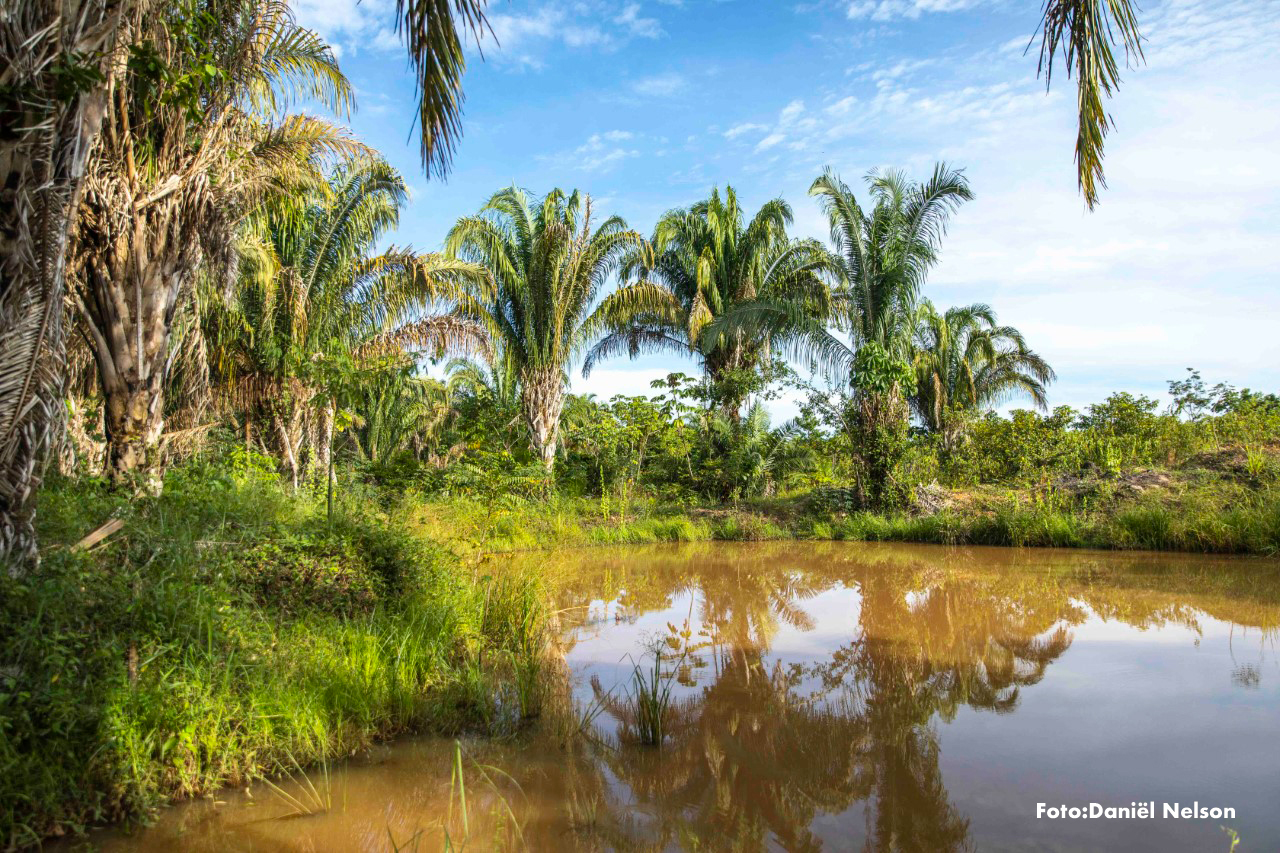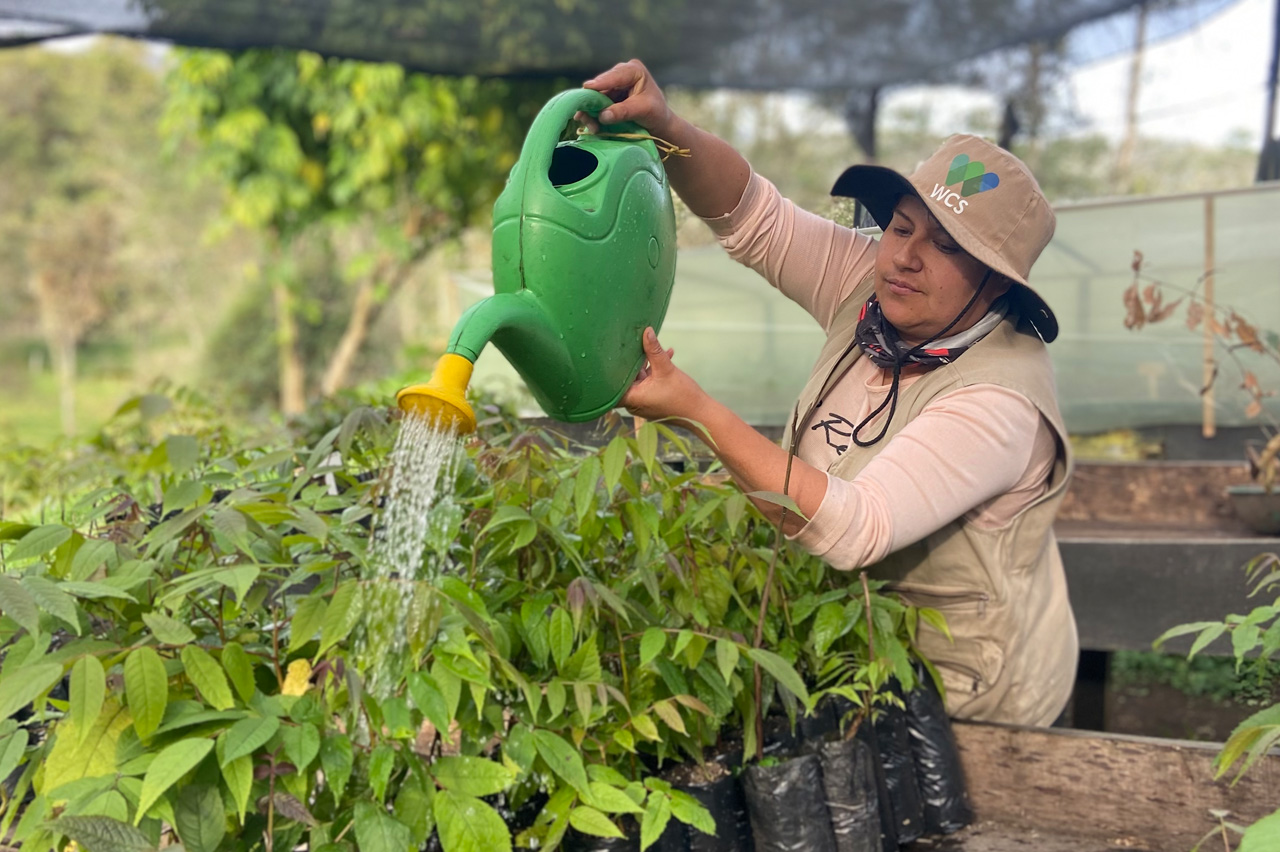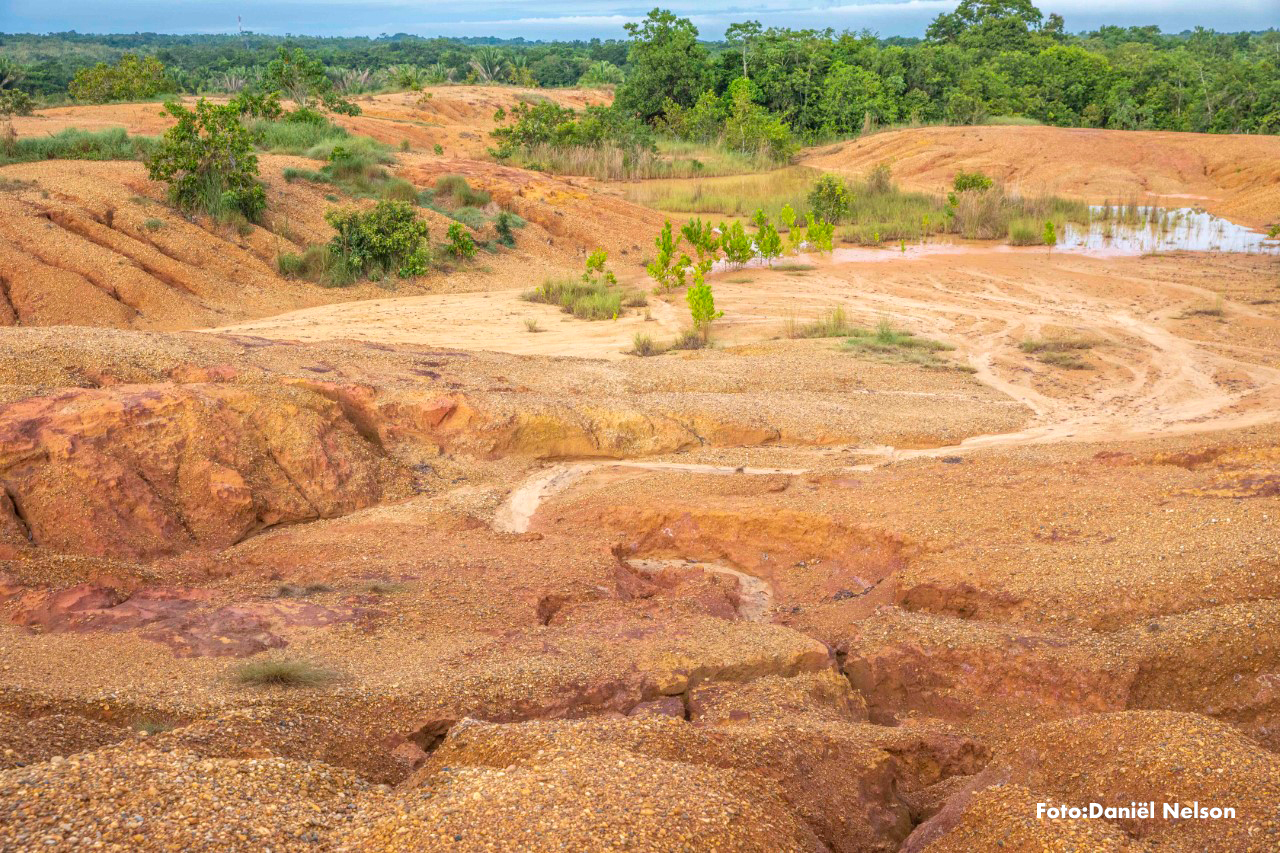By: Jacobo Patiño Giraldo
In the mountains of Tolima, a group of primary school students excitedly observe the young native tree seedlings they will soon plant. They are students from La Voz de la Tierra Technical Educational Institution, located in the municipality of Roncesvalles, and they have spent months preparing to take on a major responsibility: becoming guardians of nine native tree species that are currently threatened in Colombia.
 Photo: William Bravo / WCS Colombia
Photo: William Bravo / WCS Colombia
In a landscape where Andean forests have been fragmented by cattle ranching and agriculture, these small actions symbolize hope. The goal is to teach children that planting a tree is also a way to care for their territory.
A partnership for conservation
This school is one of seven educational institutions participating in the initiative “Adopt a Tree,” part of the public–private partnership Saldaña River: A Basin of Life, supported by the Franklinia Foundation and APC Colombia.
The project brings threatened native species to rural schools in key areas, aiming both to promote environmental education and to ensure these trees can grow where they’ll be cared for and protected. Conservation, therefore, stops being an abstract concept and becomes a daily experience for students.
Protecting life from the classroom
Globally one in three tree species is threatened, according to the International Union for Conservation of Nature (IUCN). Deforestation, the timber industry, and the expansion of agricultural frontiers have put at risk hundreds of species that provide food, refuge, and oxygen to humans and the animals that share their ecosystems.
For Colombia—the second most diverse country in the world in terms of tree species—the loss of this richness would be devastating. It would affect the species that depend on these trees, reduce the ecosystem services they provide, and weaken their ability to resist disease and adapt to climate change.
“We started with a first phase propagating threatened species with support from the Franklinia Foundation. That opened the door to adding an educational component in this second phase,” explains William Bravo, Restoration Specialist at WCS.
 Photo: William Bravo / WCS Colombia
Photo: William Bravo / WCS Colombia
The team identified schools in different areas of the Saldaña River basin and proposed that their students and teachers adopt trees of threatened species. “We first verified that the schools offered adequate conditions to plant the trees, and then we conducted workshops to introduce the project to the children,” he adds.
Six species were selected: three native conifers—romerón (Podocarpus oleifolius), hayuelo (Retrophyllum rospigliosii), and chaquiro (Prumnopitys montana)—as well as black walnut (Juglans neotropica), mountain cedar (Cedrela montana), and the iconic wax palm (Ceroxylon quindiuense), Colombia’s national tree. “All of them share a history of overexploitation that has led to their current threatened status,” Bravo emphasizes.
“To explain the topic in a didactic way and help students understand what it means to adopt a tree and care for it, we created a booklet called Forest Friends, featuring two characters—Mrs. Squirrel and Mr. Oak—who present the initiative to the children. In the end, they were all very excited to participate,” he recalls.
The team also organized an activity in which children, together with their parents, chose one of the species to be planted and assigned it the ‘superpowers’ of their favorite heroes, helping strengthen their connection to the trees. “It was a beautiful experience because they let their imagination run free and created very lovely illustrations,” he says.
Adopt to learn
We spoke with Soraida González, PhD in Education and Environmental Culture and primary school teacher at La Voz de la Tierra, about her experience and that of her students in this initiative, the importance of environmental education in Colombia, and the benefits that adopting a tree can have in children’s learning processes.
For Soraida, the initiative has been an excellent opportunity to teach her students about the importance of the environment and to actively involve them in its care. “This strengthens their environmental education because it allows them to learn through real experiences and not only as something abstract seen from a classroom, which is often the case in traditional curricula,” she explains.
 Photo: Saldaña River: A Basin of Life
Photo: Saldaña River: A Basin of Life
Furthermore, taking care of a tree is not only an opportunity to learn about environmental issues—it also helps develop other skills, such as observation and teamwork. “It is an excellent tool for teaching research because it involves monitoring the tree’s conditions, checking whether it needs water, and recording data such as height and number of leaves,” she adds.
Although Soraida teaches mainly first graders, students from other grades are also eager to learn about local biodiversity and its conservation. “We have a field trip planned and everyone is very excited. They love animals and plants, so we will take them to properties where the species we will plant can be found, so they understand how they grow.”
Teaching in rural areas is not without challenges. Limited space, large student groups, and the need to adapt education to a rapidly changing world make classroom management complex. Still, Soraida remains committed to providing her students with meaningful experiences that bring them closer to nature.
She also points out that Colombia’s public schools must comply with the Basic Learning Rights (DBA), which establish the minimum content that must be taught in each grade. While these promote standardized learning, they can leave little room for topics like environmental education. “This is why projects like this are so valuable, since they allow these topics to be addressed through practice,” she says.
Beyond science lessons, these activities are nurturing a deeper connection with nature—one that could last a lifetime.
An initiative for the future
At La Voz de la Tierra school, planting day is approaching. Soon, students will watch the trees they plant with their own hands begin to grow.
“The act of going out to plant a tree or participate in a workshop refreshes and facilitates learning processes and breaks routine. I strongly believe in providing other spaces and other ways to learn,” Soraida comments.
 Photo: Saldaña River: A Basin of Life
Photo: Saldaña River: A Basin of Life
According to Bravo, the initiative will last two years. “Every month, the children will monitor the trees, measure them, and water them while recording their development. At the end, we hope to have data collected by students from rural schools in the Saldaña River’s three sub-basins.”
The goal is for the activity to eventually remain in the hands of teachers and students, so that it continues for many years. “If they continue the process, they could have a very meaningful classroom exercise and observe all the growth phases of the tree. We are working to engage more teachers, and many are highly motivated to continue,” he adds.
The hope is that as these trees take root, so too will a lifelong curiosity and commitment to nature in the children who planted them.